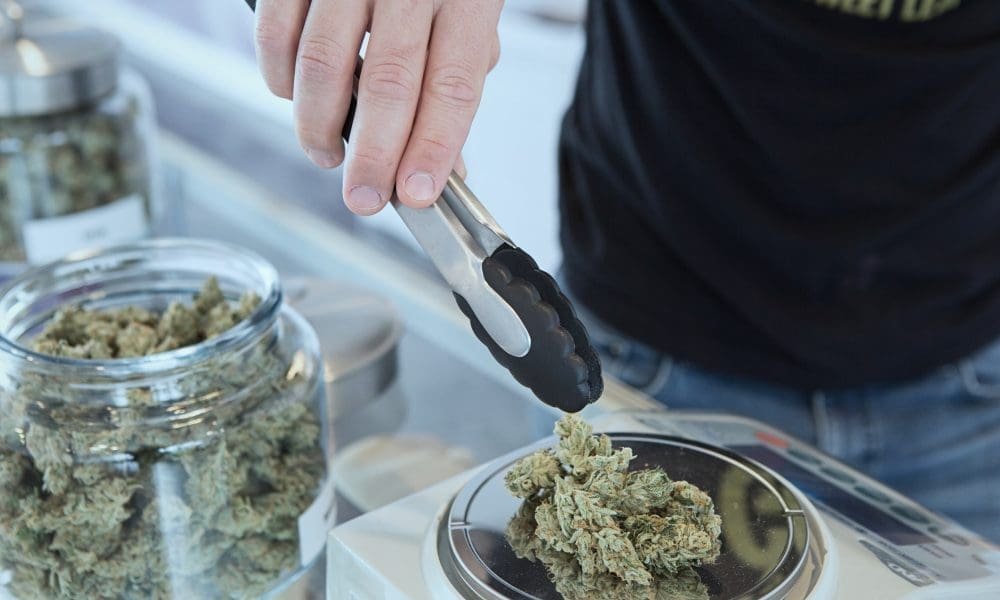The lawmakers will provide cannabis users with a safer experience by removing the cannabis products from street corners.
By Paul Armentano, NORML
It comes as no surprise that police in Warwick, Rhode Island recently walked back claims that exposure to “fentanyl-laced cannabis” was responsible for a local woman’s tragic overdose death. Although street fentanyl is deadly, it’s rarely or never present in marijuana.
There are still many sensational headlines, and a number of dubious reports from police claiming the opposite. For instance, police in Brattleboro, Vermont generated headlines in 2021 when they arrested multiple persons on charges of distributing fentanyl-tainted cannabis. Days later, however, lab tests confirmed that no fentanyl was present in any of the marijuana samples seized by law enforcement.
In Connecticut, a similar scenario was also widely publicized, with officials alleging that marijuana laced fentanyl caused over thirty overdoses. Forensic analyses later determined that only one of these cases actually involved the ingestion of fentanyl. Health officials stated that this case was likely the result of an accidental contamination.
These sensational declarations, which are followed by much less well-publicized refutations have been around for a long time. According to the findings of a 2023 report issued by New York State’s Office of Cannabis Management: “Misinformation related to the danger of accidental overdose due to cannabis ‘contaminated’ with fentanyl remains widespread… Anecdotal reports of fentanyl ‘contaminated’ cannabis continue to be found to be false, as of the date of this publication.”
In fact, a recent Harvard Medical School study revealed that forensic labs almost never find fentanyl in illicit cannabis seizures. Our results showed no widespread cooccurrence of cannabis and fentanyl, the authors concluded.
It’s important to note that unregulated cannabis has its own issues with quality. For instance, a recent scientific analysis of unregulated cannabis flowers seized by police determined that 16 percent of samples “had detectable levels of mycotoxins and fungal metabolites.” Some hemp-derived cannabinoid products have been found to contain unlabeled cutting agents and potentially dangerous heavy metals—including magnesium, chromium, nickel, and mercury.
Some commercially available CBD products have also been found to contain psychoactive additives, including dextromethorphan, a common cough suppressant. In addition, these unregulated products often contain far higher or lower percentages of the active ingredients identified on their labels. The consumer could end up getting more than they bargained, or, in some instances, less.
It’s not the answer to these issues of quality control to make sensational (and usually fabricated) claims that weed is fentanyl laced. This is done by preventing consumers from being exposed to products that may be adulterated, mislabeled or otherwise contaminated.
Retail stores licensed by the state are able to sell products from manufacturers who have been granted a license. According to good manufacturing practice, cannabis is grown and manufactured. Products are lab tested and labeled accordingly—ensuring that consumers have access to products of verified purity and potency.
The unregulated cannabis market is disrupted as these states-legal markets develop. According to a 2023 survey, 52 percent of consumers residing in legal states said that they primarily sourced their cannabis products from brick-and-mortar establishments. In contrast, just six percent said they bought cannabis primarily from “dealers.”
Further, jurisdictions that have legalized marijuana markets see declines in the use of both synthetically produced and unregulated hemp-derived cannabis products.
Does marijuana legalization end the fentanyl epidemic? No. No.
Paul Armentano, the deputy director at The NORML–the National Organization for the Reform of Marijuana Laws.
Trump’s VA secretary meets with a psychedelic therapy advocate to discuss expanding access for military veterans




